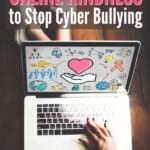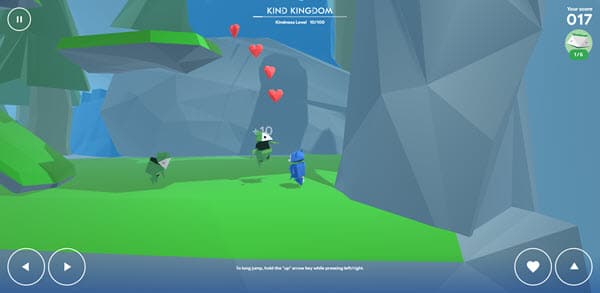In celebration of National Bullying Prevention Month, I’m proud that as a member of the Forward Influence Network, I’m able to partner with Google on the “ItsCoolToBeKind campaign. I’m a vocal advocate of the strength of kindness and this challenge is a powerful way for all of us to prevent cyber bullying and create a positive online environment by practicing online kindness.
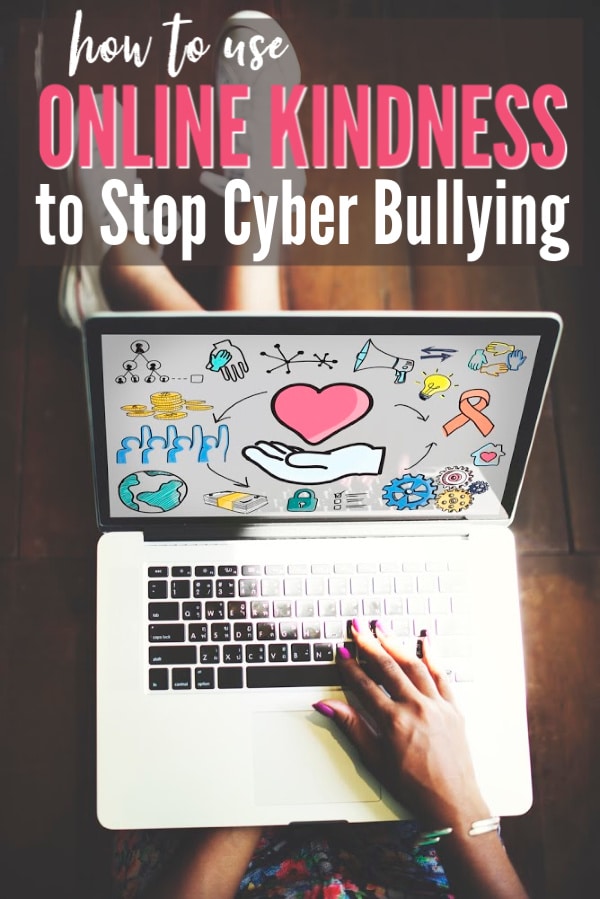
Facts About Bullying
The American Psychological Association defines bullying as “a form of aggressive behavior in which someone intentionally and repeatedly causes another person injury or discomfort. Bullying can take the form of physical contact, words, or more subtle actions. The bullied individual typically has trouble defending him or herself and does nothing to “cause” the bullying.”
Armed with smartphones and social media, it’s become far easier for people to impact each other’s lives. Sadly, some people use this opportunity to bring bullying habits into the digital world.
Online bullying uses social networking platforms to attack or isolate victims. Cell phones and social media sites become tools to harass or threaten others.
That may be why 28% of students have experienced bullying personally and 71% of students have witnessed bullying directly.
Unfortunately, most of us know exactly what it feels like to be bullied. We know the effect on our mental health and understand why anxiety and depression are frequent outcomes.
Thankfully, the same tools that make bullying so easy now, also make it easy for those of us who oppose it to counteract it.
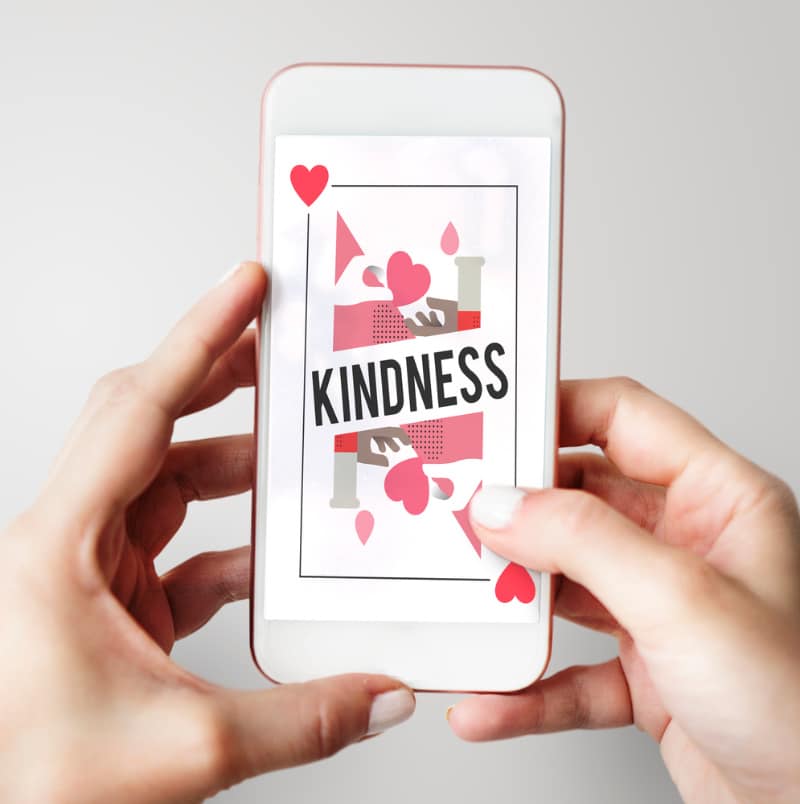
How to Create a Positive Online Environment
Because I personally spend a lot of time online as part of my job, I’ve spent a lot of time thinking about how to foster a healthy, productive environment. I want to enjoy my time online and I want it to be a safe space for my children as well.
I’ve shared digital parenting tips along with tips for how to help our kids be safe online. I’m a firm believer that we should be able to take advantage of the many benefits of technology and can do so with limited risk through education and practicing good digital habits not by eliminating access to technology.
One of the most powerful things we can do is to model positive behavior online. Show your children and others how social media can be used to make others feel better, not worse.
For example, I saw this photo of my friend Carolina from Mama Instincts on Instagram and commented to let her know how beautiful I think she is both inside and out.

And in my Random Acts of Kindness Facebook group, I posted the following message to remind group members how much of an impact their actions have in making the world a happier place.
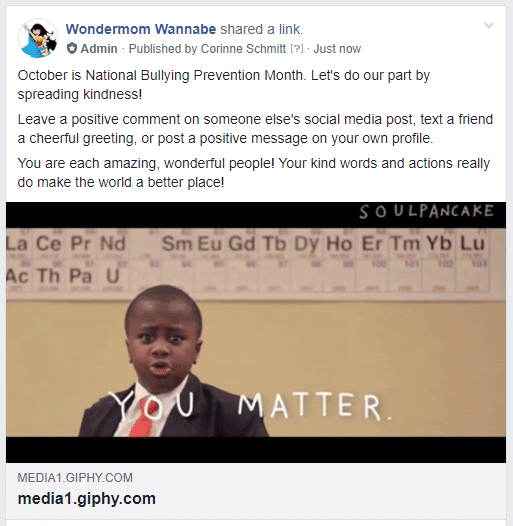
The great thing about being kind online is that it’s so easy! It literally takes just a few mouse clicks or a couple dozen keystrokes to send a positive message to others.
Here are some things you can do in mere seconds to spread kindness online:
- Like your friends’ social media posts
- Comment on your friends’ social media posts with an upbeat remark
- Share funny quotes, photos, or memes on your own social media profiles to bring a smile to others
- Share inspirational quotes or thoughts to lift others up
- Send a text message or email to someone you know with a note as simple as “thinking about you and hope you’re doing well!”
- Report negative behavior or try to negate it by posting a positive spin on the negative comment instead
- Challenge others to spread kindness online to make a fun game of it
I challenged my close online friends to perform their own acts of online kindness within 48 hours. In a few seconds (the time it took me to challenge them), I was able to amplify the positive effect of online kindness to several people.
Here’s one of the spreading kindness posts shared by my friend Susan on her Organized 31 Facebook page.
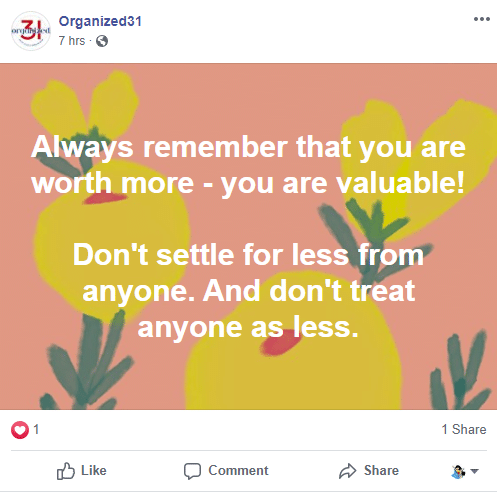
Think about what would happen if they challenged their own friends and continued to spread positivity! Help give this movement momentum by performing your own online acts of kindness and challenging your friends and family to do the same.
Perform an online act of kindness individually or with your kids (make sure to tag your friends when you do so they don’t miss it). Then, challenge at least three other people to perform their own acts of online kindness within 48 hours.
[socialrocket-tweet quote=”It’s cool to be kind! Make a powerful, positive impact by treating others how you’d like to be treated online and in person. #ItsCoolToBeKind #BeInternetAwesome #Sponsored” tweet=”It’s cool to be kind! Make a powerful, positive impact by treating others how you’d like to be treated online and in person. #ItsCoolToBeKind #BeInternetAwesome #Sponsored”]
When it comes down to it, we’re really just applying the golden rule to our online behavior. If we all treat others the way we want to be treated, everybody wins!
Teaching Your Kids to Be Kind Online
Learn more about how to be kind online with Google’s Be Internet Awesome Family Guide at g.co/BeInternetAwesome.
Visit the site with your child and play Interland together. In Kind Kingdom, your child can practice kind online behaviors.
The Family Guide and Kind Kingdom help kids:
- Identify situations of harassment or bullying online.
- Evaluate what it means to be a bystander or upstander online.
- See that being an upstander is a choice.
- Learn there are different ways to intervene and be an upstander in a specific situation.
- Choose how to respond from various options that feel safe and appropriate to you.
- Learn specific ways to respond to bullying when you see it.
- Know how to behave if you experience harassment.
- Express feelings and opinions in positive, effective ways.
- Respond to negativity in constructive and civil ways.
- Make good decisions when choosing how and what to communicate – and whether to communicate at all.
- Identify situations when it’s better to wait to communicate face-to-face with a peer than to text them right away.
- Reflect on the online behavior of adults.
- Consider how the way adults act can model behavior for younger generations.

